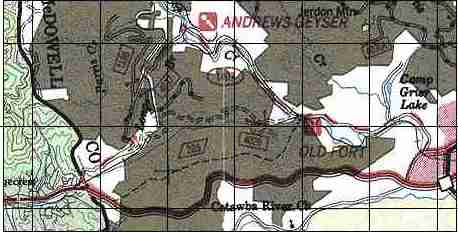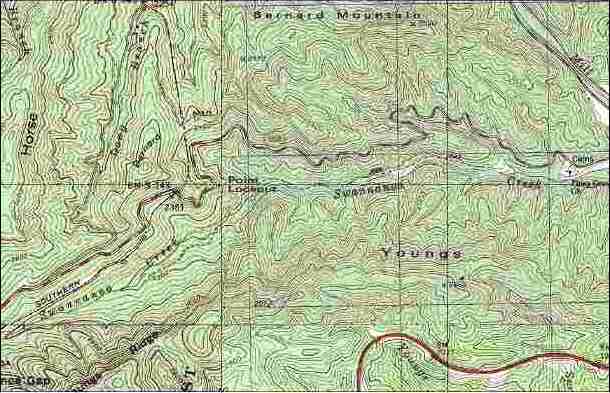
|
This
road stills has original concrete pavement. Some of the pavement has an
asphalt overlay. Other pavement has asphalt patches. This photo shows
the double yellow centerline still visible on the road below Point
Lookout. Below Point Lookout, the centerline is white. |
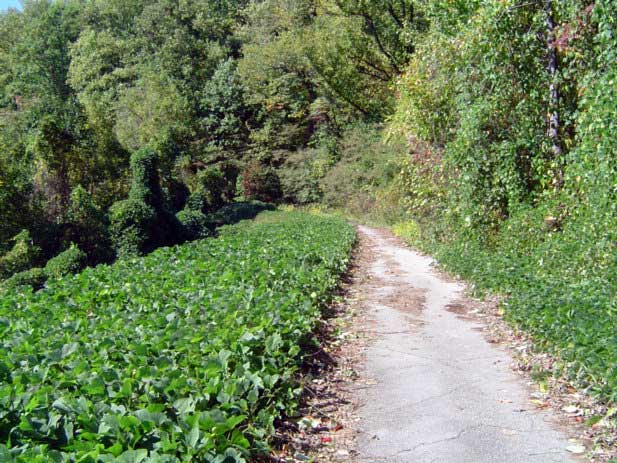
 |
Sections
that have no forest cover are overgrown with kudzu. This view and the
panorama below appear to be from the same location as the postcard from
Gribblenation. |
  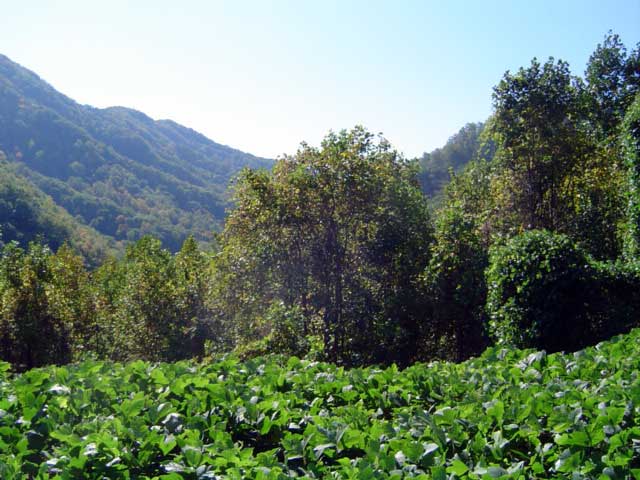 |
Panorama from the road of the Royal Gorge. |
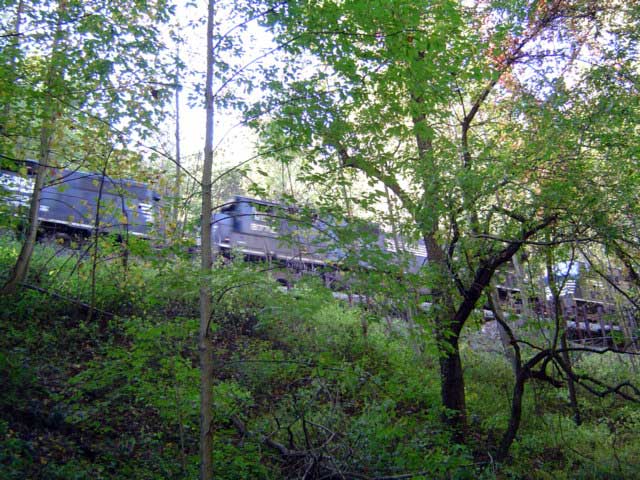 |
A train passing above us from the east entrance of railroad
tunnel 1. |
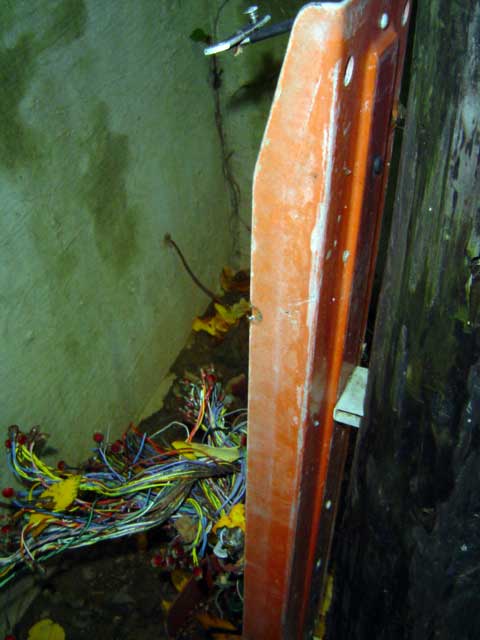  |
One vestige of modernity. This concrete vault protects an now
nonfunctional telephone distribution block (in left photo). |
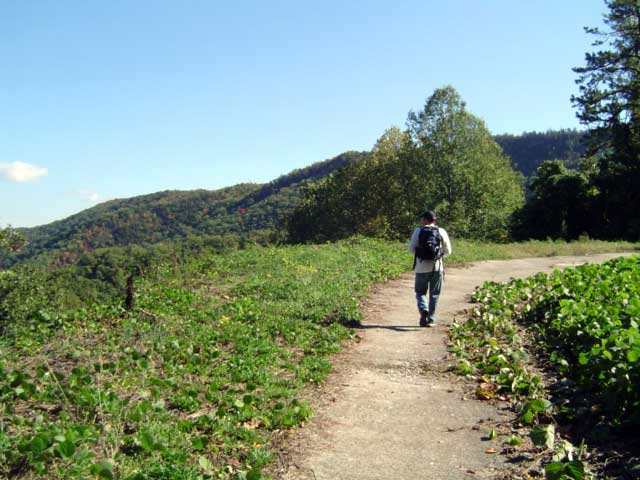 |
Point Lookout. There was a building on the left, probably on
pillars. |
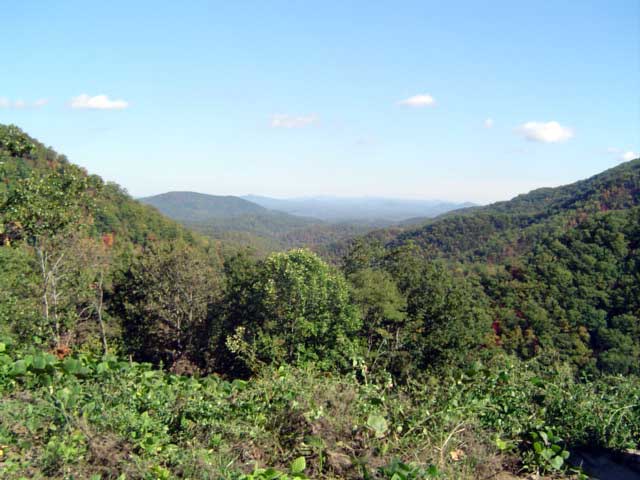
 |
The
view from Point Lookout. This vantage looks due east toward Old Fort
and Morganton. This view is also seen in the postcard from
Gribblenation. |
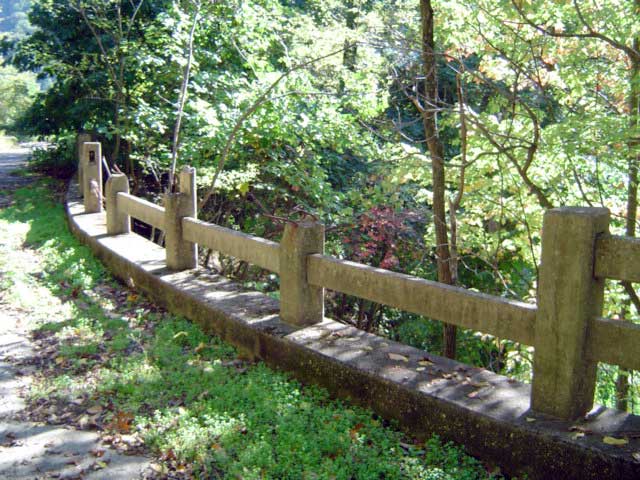
 |
An
old concrete railing over the west entrance of railroad tunnel 1. This
railing is also seen in the postcard on Gribblenation. |
 |
The east entrance of railroad tunnel 2. |

|
A couple of miles north of
the east end of the trail on Old US 70 is one of North Carolina's
curiosites. The fountain is the Andrews Geyser, named after a railroad
executive. It was built by the railroad in 1885 to memorialize the 120
men who died building the railroad over Black Mountain. The geyser was
built within a hairpin curve of the railroad, so it could be seen from
the trains from multiple angles. There was a hotel next to the railroad
overlooking the fountain, but it burned in 1903. The fountain is
gravity fed from a lake built up on the mountain by the railroad for
that purpose. The lake is now the location of the Inn on Mill Creek.
After the geyser, Mill Creek Road becomes a gravel road over Black
Mountain to the west end of the trail.
|
